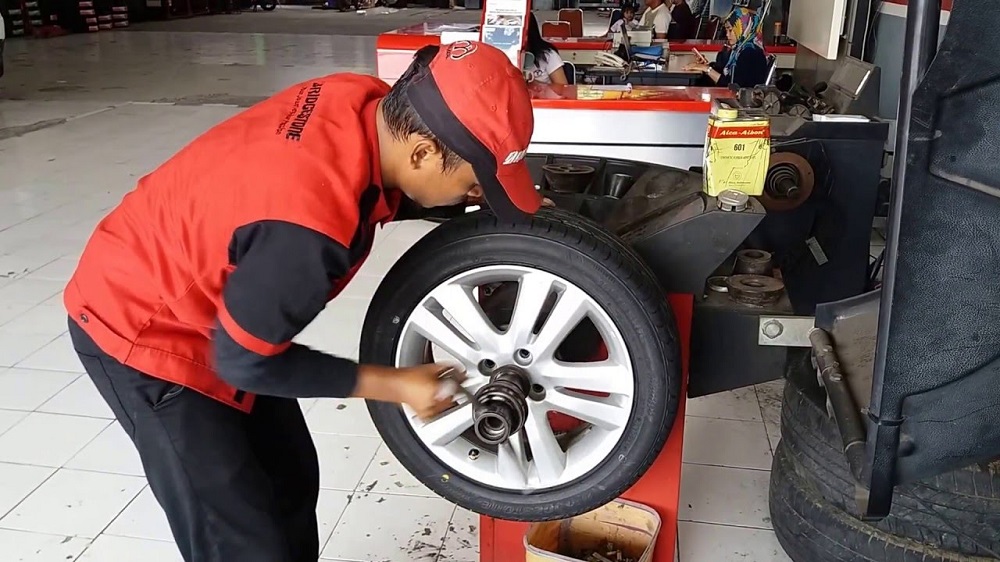Every time you change tires, a car workshop will ask you whether the tires should also be balanced. Due to the additional costs, many vehicle owners decide against this step, although it can extend the life of their tires and contribute to even wear. In the following you will find out how the balancing of the tires works and what advantages you will experience here.
Why should tires be balanced at all?
Balancing car tires means that any imbalance in the wheel is compensated for. This makes the tire “rounder” again, the momentum of its movement is again aligned more strongly to the center of the supporting central axis. Several advantages speak for the regular removal of any imbalance that may have occurred:
No one-sided wear: Even with a perfectly round tire you would not be able to prevent it from developing an imbalance over time. For example, braking maneuvers with strong abrasion are responsible for this, which ensure that the profile is worn on one side. Even the tire production with a valve attached on one side creates a slight imbalance. With regular balancing, you compensate for the effects of one-sided wear, which is reflected in smoother driving behavior.
Increased service life: This further advantage is a direct result of the uniform wear. Unbalanced tires with their one-sided abrasion lose their profile unevenly and over time take away your safe road holding. You have to think about replacing or buying new tires earlier than with a balanced tire. Balancing car tires thus promotes a longer service life for your tires.
Reduction of damage: Even if the imbalance is minimal and cannot be seen with the naked eye, your chassis must compensate for this effect. This not only threatens one-sided wear of the wheels; other vehicle components are also unnecessarily and excessively stressed. The result is gradual damage that is not directly related to the wheel or tire. Regular balancing will reduce the risk of damage to the vehicle, which is worth real money.
How does tire balancing work?
First of all, it should be noted that this is correctly a wheel balancing. Tire is simply the rubber that is drawn onto the rim, but balancing is about evenly shaping the entire wheel. A rough distinction must be made between static and dynamic balancing.
Both variants are carried out by every well-equipped car workshop and are basically the same. The tire to be balanced is placed in a special balancing machine and rotated rapidly. The machine analyzes the simulated running behavior of the tire and detects any irregularities.
This is indicated to the employee of the car workshop via previously attached sensors. This compensates for the determined imbalance with small weights that are glued into the tire. This is followed by a new check using a balancing machine, the sensors should indicate an improvement in the running behavior due to the weights. It may be necessary to go through several rounds of re-gluing or moving weights.
Static and dynamic balancing
The simple variant of balancing is static. The centering of the tire and the gluing in of the weights are based solely on its running axis and direction. Simply put, the tire is viewed as a two-dimensional circle with individual weights attached to its edge.
In dynamic balancing, the third dimension of the tire is also considered. This makes sense because there can also be an imbalance on the inside or outside of the tire. This is not taken into account with static balancing. Dynamic balancing car tires is more complicated, gluing the weights is not possible with all tires. Rather, there must be a wider tire width so that the weights can be glued in on the side.
Balancing car tires – how often?
In general, it is not possible to state an ideal period of time when it is essential to balance your tires. Balancing car tires is always recommended when you have pulled the tire onto a rim. Otherwise, the driving behavior indicates whether balancing is worthwhile.
Driving behavior is no longer as smooth and pleasant as it was at the beginning, especially at higher speeds; in many cars this is shown by slight vibrations of the steering wheel. Occasional balancing is also recommended when changing from winter to summer tires and vice versa.
Not least because the tire moves minimally on the rim for months when the wheel is in storage and there is a risk of the weights shifting.
What does tire balancing cost?
In an independent workshop you often pay between 7 and 10 $ per wheel, so the complete set of tires can be balanced for less than 30 $. Dealerships and large workshops take a little more, between 40 and 50 $ are not uncommon here.
Take time to get several offers from local workshops. If you entrust the workshop with the seasonal wheel changes in addition to balancing car tires, you will be met in many places with the price. When compared to the cost of potential tire and vehicle damage, the expense is manageable.



